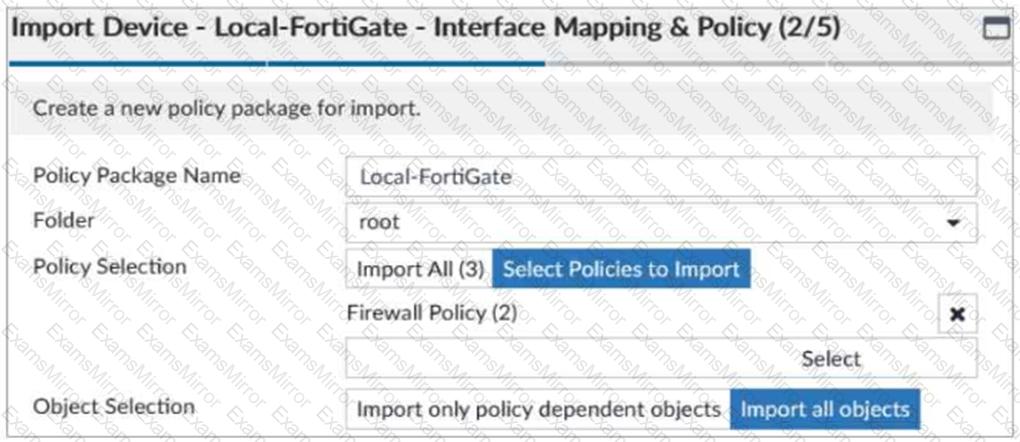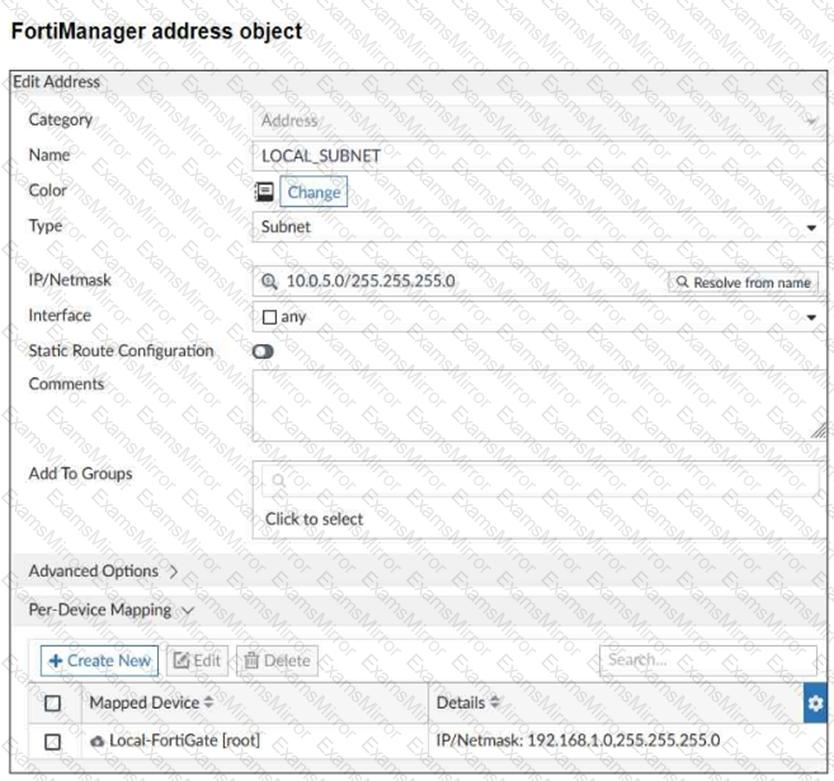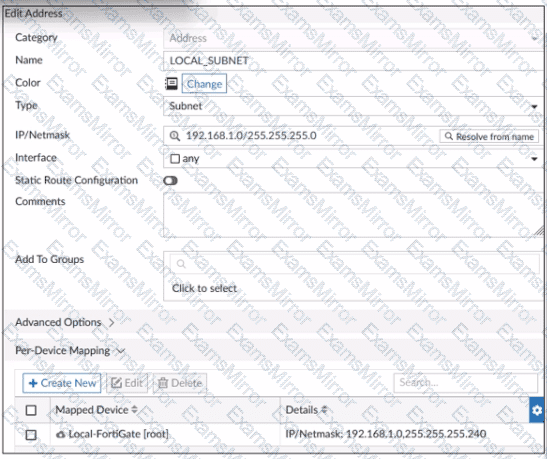Cyber Monday Special Limited Time 70% Discount Offer - Ends in 0d 00h 00m 00s - Coupon code = getmirror
Pass the Fortinet Network Security Expert FCP_FMG_AD-7.4 Questions and answers with ExamsMirror
Exam FCP_FMG_AD-7.4 Premium Access
View all detail and faqs for the FCP_FMG_AD-7.4 exam
504 Students Passed
85% Average Score
98% Same Questions
Refer to the exhibit.

An administrator is importing a new device into FortiManager and has selected the options shown in the exhibit.
What will happen if the administrator makes changes and then installs the modified policy package on this managed FortiGate?
Which two items does an FGFM keepalive message include? (Choose two.)
Which API method is used to create objects or overwrite existing ones?
Refer to the exhibit.

An administrator has created a firewall address object that is used in multiple policy packages for multiple FortiGate devices in an ADOM.
After the installation operation is performed, which IP/netmask will be installed on Local-FortiGate for theLOCAL_SUBNETfirewall address object?
Exhibit.

Which two statements about the output are true? (Choose two.)
What will be the result of reverting to a previous revision version in the revision history?
What are two outcomes of ADOM revisions? (Choose two.)
Refer to the exhibit.

An administrator has created a firewall address object that is used in multiple policy packages for multiple FortiGate devices in an ADOM.
After the installation operation is performed, which IP/netmask is shown on FortiManager for this firewall address object for devices without a Per-Device Mapping set?
Which output is displayed right after moving the ISFW device from one ADOM to another?
A)

B)

C)

D)

An administrator, Trainer, who is assigned the Super_User profile, is trying to approve a workflow session that was submitted by another administrator, Student. However, Trainer is unable to approve the workflow session.
What can prevent an admin account that has Super_User rights over the device from approving a workflow session?
TOP CODES
Top selling exam codes in the certification world, popular, in demand and updated to help you pass on the first try.
